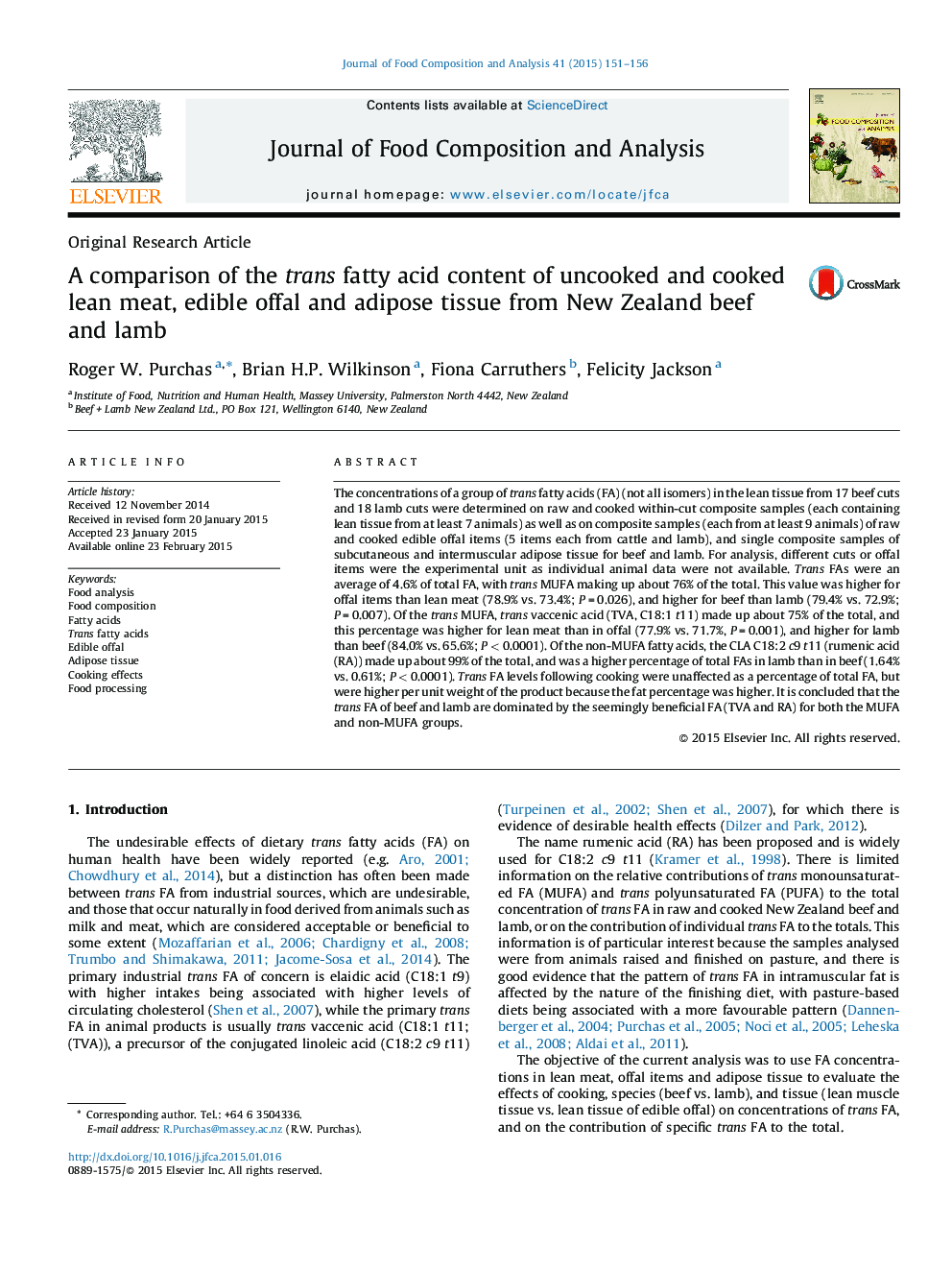| کد مقاله | کد نشریه | سال انتشار | مقاله انگلیسی | نسخه تمام متن |
|---|---|---|---|---|
| 1218228 | 1494501 | 2015 | 6 صفحه PDF | دانلود رایگان |
• Levels of trans fatty acids in lean of New Zealand beef and lamb were low.
• Most of the trans fatty acids present were as MUFA.
• The predominant trans MUFA was trans vaccenic acid.
• The predominant trans non-MUFA was rumenic acid.
• The main trans fatty acids present are desirable with respect to consumer health.
The concentrations of a group of trans fatty acids (FA) (not all isomers) in the lean tissue from 17 beef cuts and 18 lamb cuts were determined on raw and cooked within-cut composite samples (each containing lean tissue from at least 7 animals) as well as on composite samples (each from at least 9 animals) of raw and cooked edible offal items (5 items each from cattle and lamb), and single composite samples of subcutaneous and intermuscular adipose tissue for beef and lamb. For analysis, different cuts or offal items were the experimental unit as individual animal data were not available. Trans FAs were an average of 4.6% of total FA, with trans MUFA making up about 76% of the total. This value was higher for offal items than lean meat (78.9% vs. 73.4%; P = 0.026), and higher for beef than lamb (79.4% vs. 72.9%; P = 0.007). Of the trans MUFA, trans vaccenic acid (TVA, C18:1 t11) made up about 75% of the total, and this percentage was higher for lean meat than in offal (77.9% vs. 71.7%, P = 0.001), and higher for lamb than beef (84.0% vs. 65.6%; P < 0.0001). Of the non-MUFA fatty acids, the CLA C18:2 c9 t11 (rumenic acid (RA)) made up about 99% of the total, and was a higher percentage of total FAs in lamb than in beef (1.64% vs. 0.61%; P < 0.0001). Trans FA levels following cooking were unaffected as a percentage of total FA, but were higher per unit weight of the product because the fat percentage was higher. It is concluded that the trans FA of beef and lamb are dominated by the seemingly beneficial FA (TVA and RA) for both the MUFA and non-MUFA groups.
Journal: Journal of Food Composition and Analysis - Volume 41, August 2015, Pages 151–156
